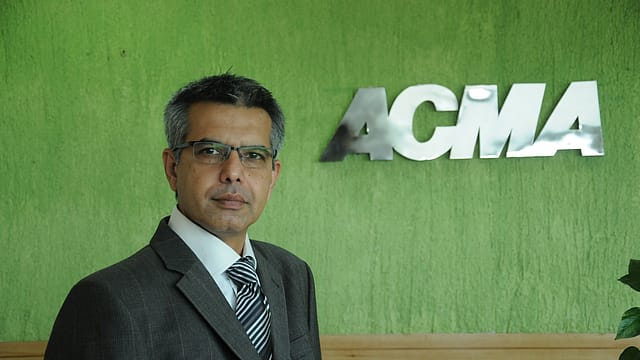Hybrid is a better route for India: ACMA
ADVERTISEMENT

With the government finalising the second phase of FAME (Faster Adoption and Manufacturing of (Hybrid &) Electric Vehicles) India, the auto ancillary makers are a worried lot. The industry fears that the policy could take a heavy toll on it. In its annual industry performance review, the Automotive Component Manufacturers Association of India (ACMA) recommends that the government should define a technology agnostic road map for xEVs (hybrid and electric vehicle) with well-defined roles and responsibilities for each stakeholder and mandate standards for components for xEVs and charging stations to prevent cheap/substandard imports. In an interview with Fortune India, Vinnie Mehta, director general, ACMA, explains the industry’s concerns. Excerpts from the interview:
Is ACMA critical of electric mobility adoption in India?
ACMA has not been critical, but apprehensive. We seriously believe that two challenges that we face are huge pressure on fossil fuels, and addressing pollution. Our concern has been that we need a definite policy framework. That policy framework should allow demand creation so that vehicle manufacturers are able to tell us what is their production plan and based on that we can then plan our investments. Right now, everything is so ad hoc. What do we prepare for? I am extremely nervous because more than 50% of what I produce is going to be out of the window tomorrow. What is the road map that helps me in transitioning?
How badly will the auto component industry be impacted?
We employ nearly 30 lakh people. Roughly half of that number, what happens to them? Right now an average car has 30,000 parts. An electric vehicle at best is 200 components. Because there are so many moving parts, there is a big aftermarket which may have 50,000 plus players. There is a huge question mark on the future of the industry as the final word on the technology hasn’t been said. We don’t even know whether that animal will be an electric vehicle or a hydrogen vehicle, fuel cell vehicle, or a combination of any of these.
January 2026
Netflix, which has been in India for a decade, has successfully struck a balance between high-class premium content and pricing that attracts a range of customers. Find out how the U.S. streaming giant evolved in India, plus an exclusive interview with CEO Ted Sarandos. Also read about the Best Investments for 2026, and how rising growth and easing inflation will come in handy for finance minister Nirmala Sitharaman as she prepares Budget 2026.
Hybrid or electric—what’s best for India right now?
In the next 10 odd years, say, at best 20% becomes electric. Even the consumption would have grown. So, the industry will survive till then. We feel hybrid is a better route for India. It is thought that hybrid is a very obsolete technology. It’s not. Depends on which part of the world you are looking at. The Japanese technology is very hybrid. Europe, the US and China is very electric whereas S. Korea is more fuel cells, etc. So, the last word on the technology has not been said. The government should not be defining whether it should be electric or hybrid. It should be concerned only about emissions right now.
As an industry, what else are you struggling with?
In next five-seven years’ time, 35-40% of the value of the car is going to be electronics. Are we going to miss that opportunity out? There is a historical problem that we do not have any electronics manufacturing capability in the country. It all gets assembled. That’s very little value-add. We need to make sure how we create an ecosystem for electronics. And the automotive industry is going to suffer big time because there is no electronics. I want absorption and percolation of technology in the Indian industry. In the future, the battle is going to be fought on technology.
Talking of technology, what can we learn from China?
We are No. 4 in car manufacturing and we are extremely proud of it. But look at the sheer size of others. What China did was that it didn’t sit back. Its automotive industry is old as ours, but it found a niche and decided that electric mobility was where it could outdo everybody, and it did. There were educational institutes, local municipalities, the government putting money, the industry came forward—everybody worked in unison. China foresaw it and was very clear that it wanted a leadership position and then it worked backwards to achieve it.
